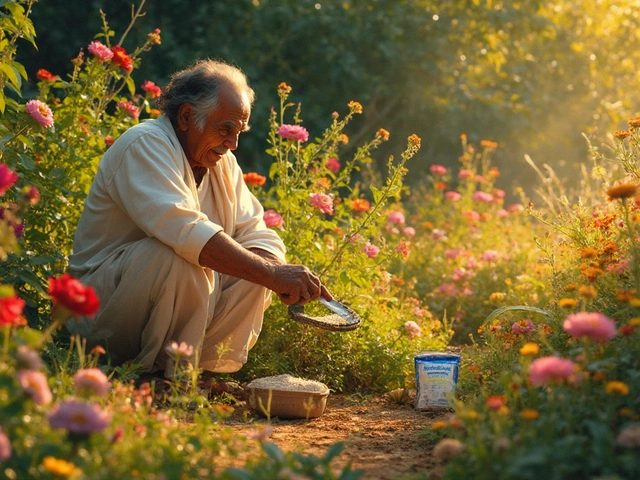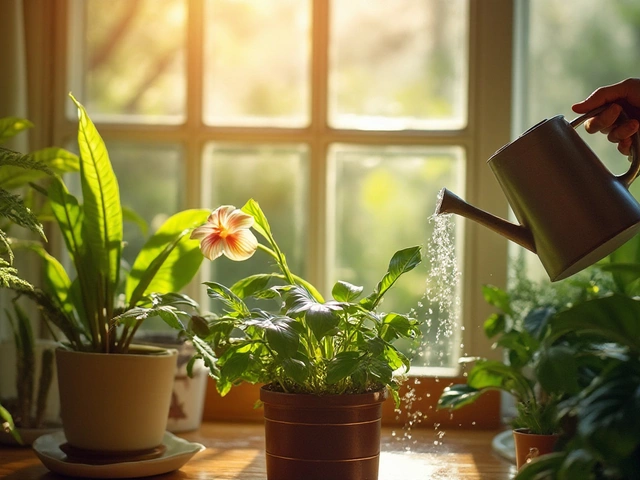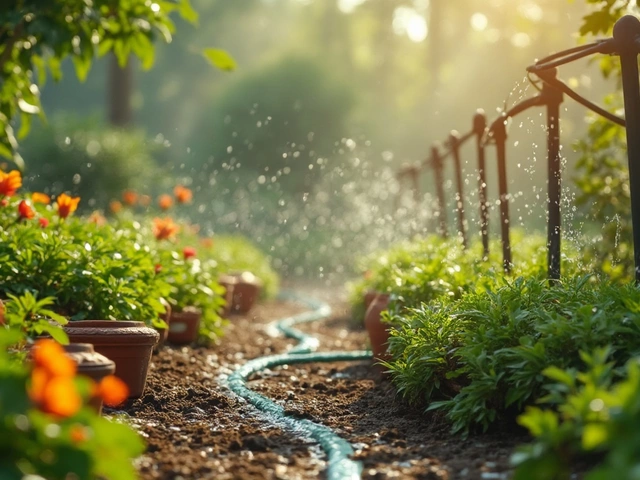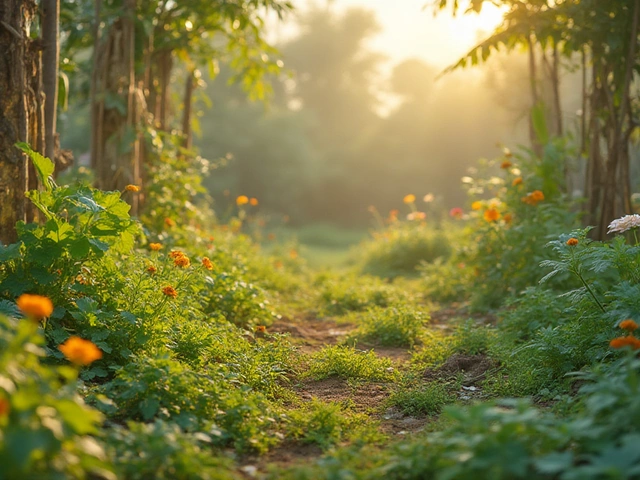Picture a table set in nearly any country on earth: you’ll find rice in some form—sticky mounds, fluffy pilafs, golden fried grains, or delicate congee. It's tough to imagine global cuisine without it. But hit pause for a second: who do we actually thank for giving us rice? The story lays buried in ancient riverbeds, shaped by hands long gone, contested by nations, and swirling with enough mystery to fill an Indiana Jones movie.
The Ancient Homelands of Rice: Where Did It Truly Begin?
It’s tempting to think rice just popped up in every Asian field overnight—but rice’s story really kicks off in a very specific time and place. Researchers working with dusty seeds in labs and muddy fields believe rice has two wild parent species: Oryza rufipogon and Oryza nivara. They’re basically the wild cousins of today’s dinner staple. Genetic evidence pins the birth of rice cultivation solidly in the Yangtze River Valley of China, around 10,000 years ago. That’s Stone Age stuff—closer to woolly mammoth times than the smartphone age.
Early Chinese communities didn’t stumble upon rice by accident. Archaeological digs at sites like Hemudu and Shangshan have unearthed ancient rice grains that match the timeline. Imagine these Neolithic farmers coaxing crops from swampy floodplains by hand, monitoring the seasonal rise and fall of the river. These people probably had no idea that their farmwork would fuel civilizations, trade routes, and even wars. But it didn’t happen all at once. The earliest rice likely looked nothing like the standardized, plump white grains we see bagged at the grocery store. Ancient rice might’ve looked wild and scraggly, and required careful tending to coax out good yields. But even at this stage, it was different enough from wild rice that you could call it a true crop.
Textbooks often pit other regions against the Yangtze. India is regularly mentioned as a possible point of origin. The Ganges River basin shows strong evidence of independently domesticated rice appearing just a few thousand years after China, around 7,000 years ago. But most genetic analysis points to Chinese rice as the world’s mother strain. Even so, both India and China gave the world two main subtypes, japonica and indica, which still anchor the rice world today. Now, let’s not forget there’s another wild ‘rice’ in North America (genus Zizania), but it’s not related; it’s just a tasty aquatic grass that shares a name.
The short version: if you had to hand out an award for "inventing" rice cultivation, the ancient folks of the Yangtze River get the gold medal. But Indian societies and some Southeast Asian groups deserve plenty of credit for developing their own approaches and diverse grain styles—so nobody walked away empty-handed.
How Ancient Rice Grew Into the World’s Most Popular Crop
Rice didn’t just stay put in China, of course. The journey from a swampland weed to a cornerstone of half the world’s calories is pretty wild. At first, growing rice was tough. It needed managed irrigation, seasonal floods, and backbreaking work. Yet something about those first paddies seemed worth the trouble. With just a single paddy, a village could support more people than with barley, millet, or wheat. That productivity fueled booming villages, which became towns, then kingdoms.
Around 2,000 BCE, rice farming reached Southeast Asia by river and coastal trade. Archaeological finds in Thailand and Vietnam show rice in pots, storage pits, and even painted onto old pottery. It’s here where you see the first hints of dryland rice (upland rice), suited to mountain terraces and slopes, a method now famous in places like the Philippines and Bali. As rice spread, people learned to grow different types suited to their climates: fluffy long grains for dry heat, sticky types for humid places, and strains that thrived in high mountain valleys.
The Ganges basin, meanwhile, became a rice hub in northeastern India, paving the way for one of the subcontinent’s classic ingredients: aromatic basmati rice. Dig a little deeper in these regions and you’ll find echoes of rice everywhere—from Hindu rituals involving the first paddy sowings to legendary festivals celebrating harvest.
Rice marched westward along the Silk Road into the Middle East and the Mediterranean. Iranians started simmering rice into tahdig. The Greeks and Romans tried cultivating it but never made it a staple. Meanwhile, Arab traders carried rice into Spain and North Africa ahead of the Moors, leaving a culinary legacy you still taste in every bite of paella and pilaf. Europe was slow to catch on—it took high-medieval Italy to adapt flooded fields at the foot of the Alps, birthing risotto. But rice never outpaced wheat and barley in Western diets.
On the other side of the world, when the Portuguese landed in Brazil or the Spanish in Central America, they carried small bags of prized rice seeds along for the ride. Transplanted by colonists and enslaved Africans alike, rice found new homes in the swampy deltas of the Carolinas and the bayous of Louisiana. That’s literally how lowcountry cooking and American jambalaya were born.
So when you sit down to sushi in Tokyo, pilaf in Istanbul, or jollof rice in West Africa, you’re tasting a food with roots running back to Neolithic farmers by the Yangtze River.
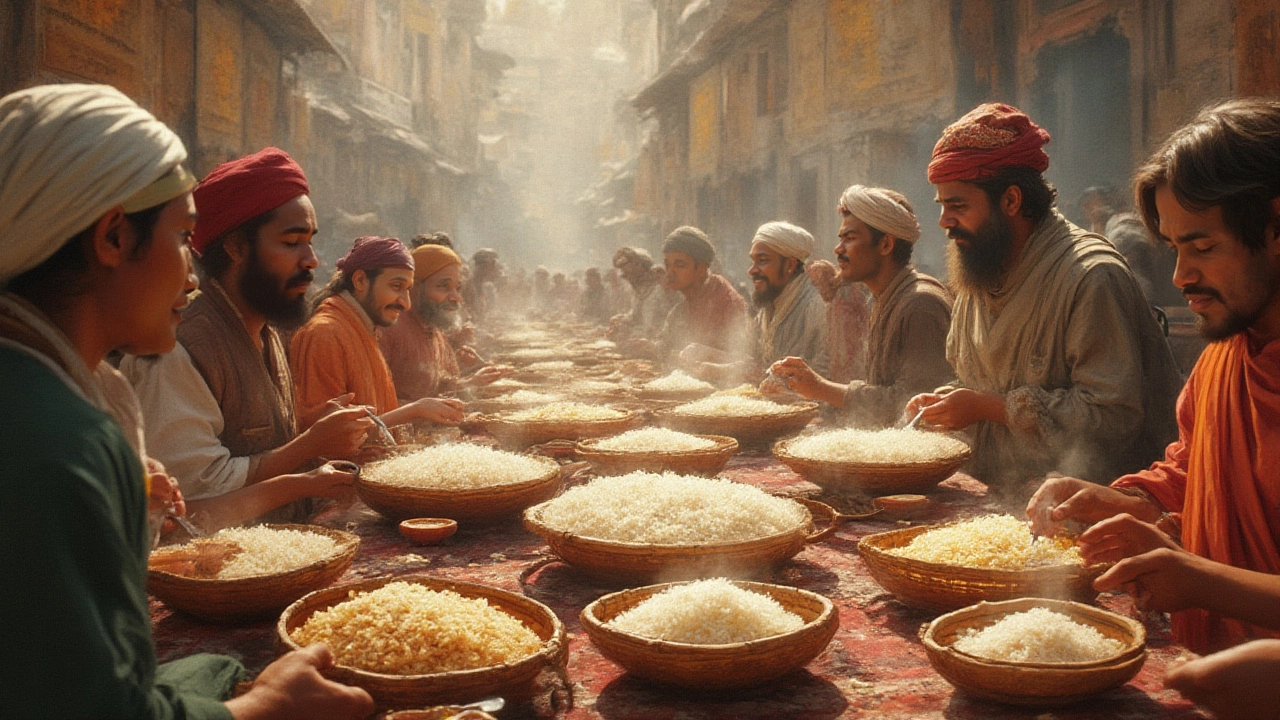
How Rice Shaped Civilizations and Daily Life
Rice isn’t just a humble side for dinner. In Asia, it’s hard to separate the history of rice from the history of civilization itself. Take China: the earliest dynasties rose on rice-growing floodplains, their economies built on the grain’s steady calorie flow. Tax records from the Han and Tang dynasties mention rice as tribute, measured out in jars. And during yearly famines or wars, rice was the only thing standing between life and disaster for millions.
In India, the arrival of rice made lush eastern and southern India the beating heart of kingdoms like the Mauryas and Cholas. Rice is baked into religious rituals, wedding feasts, even daily greetings (ever tried the Indian phrase “Have you eaten rice?” instead of “Hello”?). In Southeast Asia, states like ancient Funan, Srivijaya, and later Angkor rose because rice supported dense populations, letting them build sprawling temples and launch armies across the landscape.
Rice shaped social classes, too. The wealthy needed more hands to clear and manage paddies, so rice-growing regions often saw sharp divisions between landowners and the folks laboring in the mud. But rice also gave rise to incredible teamwork: in places like Bali’s thousand-year-old Subak system, farmers synchronize irrigation and planting, all with a blend of tradition and precise community planning. Japan’s Shinto rites for rice planting blur the line between farming and the sacred, and their ancient emperors claimed divine descent based on their supposed rice-growing ancestors.
The deep importance shows up in language, art, and music, not just the kitchen. Watch old movies set in rural Asia—the golden waves of rice at harvest time are a symbol of prosperity, hope, sometimes even revolution. During World War II, armies in Asia fought bitterly over rice-rich regions, knowing control meant feeding millions or starving the enemy.
Modern life still dances to rice’s rhythm. Today, more than 3 billion people eat rice every day, and it’s the main food in much of Southern and Eastern Asia. Think about your favorite Asian dish—from Korean bibimbap to spicy Thai curries—most of them start with a scoop of steamed rice. The older you dig into any culture, the more you see rice isn’t just food, it’s a pillar of identity and survival.
Rediscovering Ancient Rice: Surprising Varieties and Forgotten Methods
Most people think of rice as either short and sticky or long and fluffy, but the world of rice is a wild, technicolor rainbow. There are over 40,000 known varieties. You’ve got black rice, red rice, sticky glutinous rice, aromatic basmati, and delicate jasmine. Some have earthy flavors, others come loaded with fragrant, popcorn-like scents. Traditional farmers—especially in highland Laos or the terraces of Yunnan—still plant rare landraces that have been handed down for centuries. These grains are genetic time capsules, holding traits like drought or flood resistance just in case weather throws a curveball.
Historically, rice wasn’t always grown in neat, flooded paddies. Dryland rice, often called upland rice, doesn’t need standing water and is grown on hillsides, especially where terracing is possible. Water trickles in via hand-carved channels, an ingenious farming trick going back millennia. Terrace farming in places like the Banaue Rice Terraces of the Philippines or the Longji Rice Terraces in China is a sight to behold—and proof people have been hacking slopes to grow rice for at least 2,000 years.
There are even relics of now-rare methods, like floating rice, which grows in seasonal floodplains of Bangladesh. These tall grasses bob above five meters of water, flowering as the rivers rise. In Africa, where rice arrived late via Arab and Portuguese traders, local varieties like Oryza glaberrima (African rice) sprang up, suited to the uncertain climate of the Sahel. Farmers on both sides of the ocean still sometimes plant these ancient grains, especially during food shortages or when modern hybrids can’t cope. If you ever vacation in Bali or travel rural Vietnam, keep your eyes peeled: unique rice rituals and rare varieties are often celebrated during annual planting festivals, where you might be invited to help sow a handful of sacred heritage seeds.
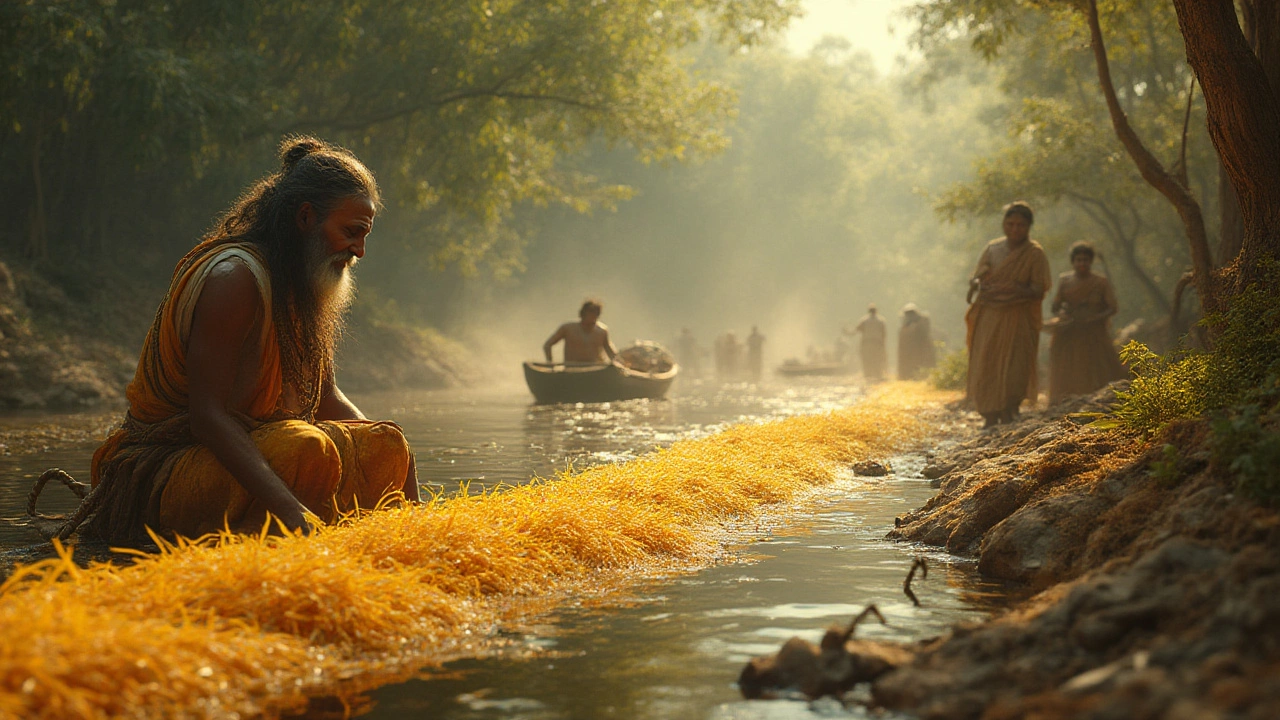
Tips for Exploring, Cooking, and Growing Rice Today
If you’ve ever wanted to go beyond the standard supermarket bag and really explore rice’s world, you’re in for a treat. Try sampling rare varieties at Asian grocers or international markets. Black “forbidden” rice turns a deep purple when cooked and packs extra antioxidants. Bhutanese red rice has a nutty flavor and earthy texture. Seek out heritage strains like Kokuho Rose or Carolina Gold if you want a taste of ancient farming—these types have been revived in the US and Japan by farmers rediscovering lost seeds.
Cooking perfect rice is an art in itself. In Asia, each culture developed its tricks. For Japanese sushi rice, rinse until the water turns clear, then use a cup-to-cup ratio of water. For Indian biryani, pre-soak the grains and steam with aromatic spices. You want that chewy, separated texture? Try the absorption method with firm, long-grain basmati. Prefer sticky rice like in Thailand? Steam it in a bamboo basket for the right texture.
Ever tried growing rice at home? It’s surprisingly doable—even in urban tubs or garden beds. Choose a container with good sun, plant seeds just below the surface, and keep the soil really damp (but not flooded, unless you’re up for a water garden). In a warm climate, you might actually get a small harvest in about five to six months. Check local nurseries for heritage seed packs, and start them indoors if your spring nights are chilly. New research shows even city gardeners can try their hand at growing small-batch rice for fun—no need for a full paddy.
And if you’re curious how those tiny ancient farmers figured it all out—don’t underestimate the power of observation, teamwork, and trial and error. The first rice growers learned by watching wild grasses, following animal trails to water, and experimenting with planting times and fields. They didn’t just invent rice cultivation—they set the table for modern life. Next time you dig into a rice origin story or scoop your bowl full, give a silent thanks to the cultures that shaped this grain into the world’s most widely shared food.

